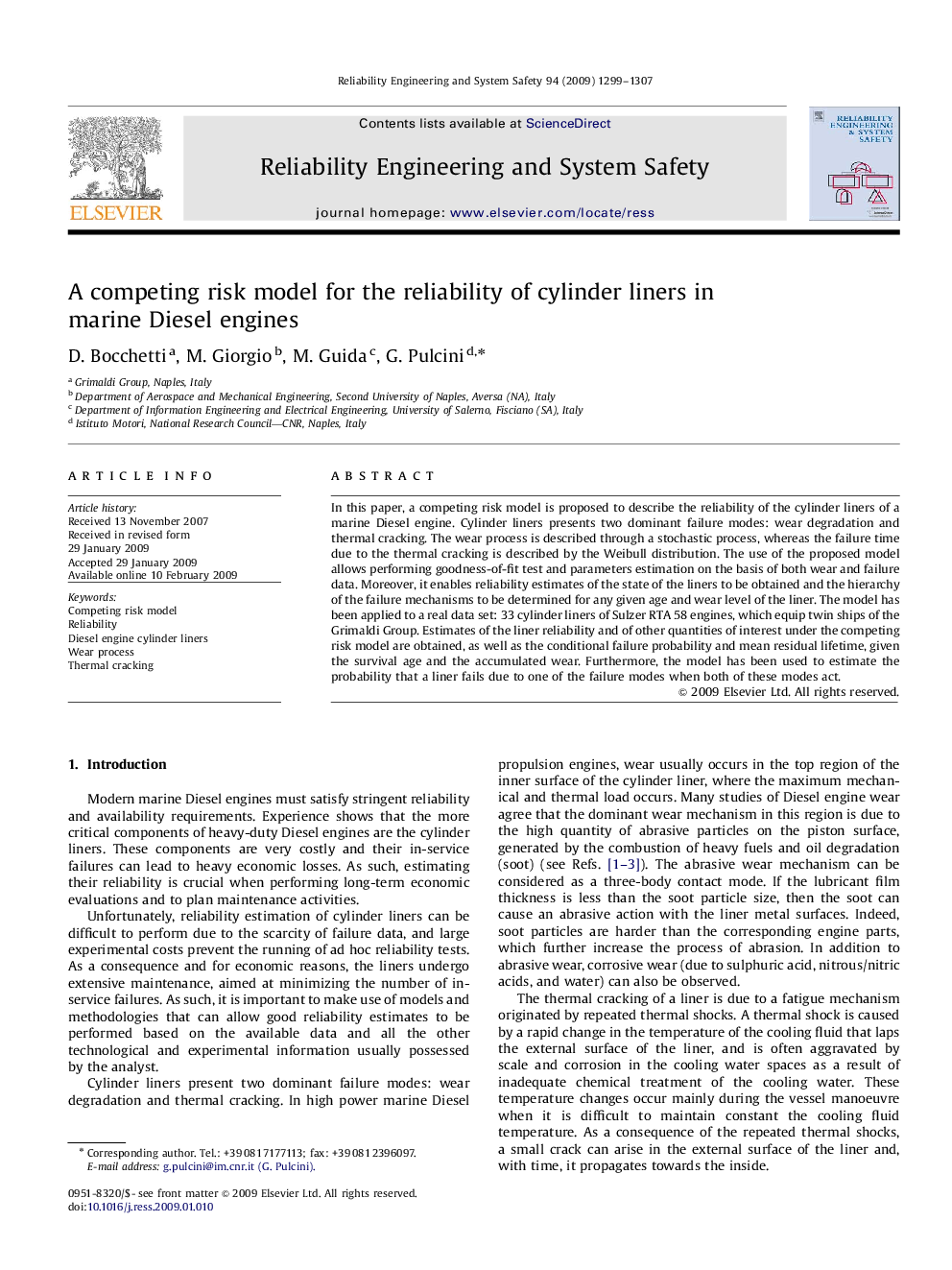| Article ID | Journal | Published Year | Pages | File Type |
|---|---|---|---|---|
| 806504 | Reliability Engineering & System Safety | 2009 | 9 Pages |
In this paper, a competing risk model is proposed to describe the reliability of the cylinder liners of a marine Diesel engine. Cylinder liners presents two dominant failure modes: wear degradation and thermal cracking. The wear process is described through a stochastic process, whereas the failure time due to the thermal cracking is described by the Weibull distribution. The use of the proposed model allows performing goodness-of-fit test and parameters estimation on the basis of both wear and failure data. Moreover, it enables reliability estimates of the state of the liners to be obtained and the hierarchy of the failure mechanisms to be determined for any given age and wear level of the liner. The model has been applied to a real data set: 33 cylinder liners of Sulzer RTA 58 engines, which equip twin ships of the Grimaldi Group. Estimates of the liner reliability and of other quantities of interest under the competing risk model are obtained, as well as the conditional failure probability and mean residual lifetime, given the survival age and the accumulated wear. Furthermore, the model has been used to estimate the probability that a liner fails due to one of the failure modes when both of these modes act.
